- +86 -147 0286 6895
- July 7-9, 2023 | Xi'An, China
Plenary Speakers
- Home
- Plenary Speakers
Plenary Speakers
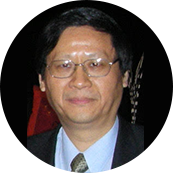
Hsiao-Hwa Chen
IEEE Fellow
Cheng Kung University
Bio: Hsiao-Hwa Chen (S'89-M'91-SM'00-F'10) is currently a Distinguished Professor in the Department of Engineering Science, Cheng Kung University,. He obtained his BSc and MSc degrees from Zhejiang University, China, and a PhD degree from the University of Oulu, Finland, in 1982, 1985, and 1991, respectively. He has authored or co-authored over 400 technical papers in major international journals and conferences, six books, and more than ten book chapters in the areas of communications. He served as the TPC Chair for IEEE Globecom 2019. He is the founding Editor-in-Chief of Wiley’s Security and Communication Networks Journal. He is the recipient of the 2021 IEEE Systems Journal best paper award and the IEEE 2016 Jack Neubauer Memorial Award. He served as the Editor-in-Chief for IEEE Wireless Communications from 2012 to 2015. He was an elected Member-at-Large of IEEE ComSoc from 2015 to 2016. He is a Fellow of IEEE, and a Fellow of IET.
Speech Title: Multi-layer Quadrature Modulation and its Application in Complementary Coded CDMA
Abstract: In an OFDM system, cyclic prefix (CP) has to be added to avoid multipath-induced inter-symbol interference (ISI) with a sacrificed bandwidth efficiency. Peak-to-average ratio (PAPR) may impair its performance further if a large number of sub-carriers are used. On the other hand, traditional multi-carrier modulation suffers a prohibitive complexity, which can not be implemented with currently available chip technologies. This work proposes a different way to implement multi-carrier modulation, namely multi-layer quadrature (MLQ) modulation, which can generate an arbitrarily large number of carriers with only two oscillators. As an application example, we apply MLQ modulation to a complementary coded code division multiple access (MLQ-CC-CDMA) system, whose multi-carrier transmission is based on MLQ modulation to mitigate ISI and multi-user interference (MUI) with ideal auto- and cross-correlations of complementary codes. Compared to a frequency domain (FD) CC-CDMA system, MLQ-CC-CDMA has a lower RF complexity. Compared to OFDM direct sequence (DS) CDMA and single carrier frequency division multiple access (SC-FDMA) CDMA schemes, MLQ-CC-CDMA achieves a higher spectrum efficiency (SE) with Rake and MMSE detection due to its multipath and multi-carrier diversity gains.
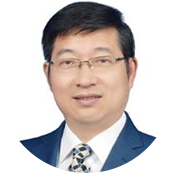
Qihui Wu
Nanjing University of Aeronautics and Astronautics
Bio: Prof. Wu Qihui, Vice President of Nanjing University of Aeronautics and Astronautics, Distinguished Professor of Changjiang Scholars of the Ministry of Education, selected by the National Hundred Million Talents Project, National Young and Middle-aged Experts with Outstanding Contribution, IET Fellow; Director of the Ministry of Industry and Information Technology Key Laboratory of Cognitive Dynamic System of Electromagnetic Spectrum. He published more than 150 SCI papers, more than 100 IEEE journal papers, more than 10 ESI highly cited papers, was selected as ESI engineering and computer science field scientists (Scientists) in the world's top 1%, won the IEEE signal processing society best young author and many other best paper awards; Geneva International Invention Exhibition gold medal 1, IET Global Innovation Award 2, authorized 2 U.S. invention patents, national or defense invention patents 24, submitted and adopted 5 international standard proposals; presided over the proposal on He has hosted more than 10 national major/key projects such as "Blockchain-based Dynamic Spectrum Sharing" National Key Research and Development Program, 173 Basic Strengthening Key, UAV Spectrum Cognitive Instrument and other major instruments of the National Natural Science Foundation of China; he has been awarded the second prize of National Science and Technology Progress, the second prize of National Teaching Achievement, five first prizes of Provincial and Ministerial Science and Technology Progress, two second prizes and three third prizes. The innovative research results have been applied to major strategic projects such as BeiDou satellite and lunar exploration project.
Speech Title: RF Learning and Cognitive Learning Theory and Methods for Electromagnetic Space
Abstract: Spectrum resources are national strategic resources, and electromagnetic space is the sixth dimensional battle space. Using machine learning to realize electromagnetic spectrum space cognition and decision making is the key for efficient utilization of spectrum resources and electromagnetic victory. Although relevant research has been conducted in this field, existing machine learning methods are simply applied under ideal conditions such as static spectrum environment and large amount of spectrum data labels, and the intersection of wireless spectrum signal processing and machine learning has not been explored from wireless spectrum characteristics, which cannot be applied to the actual dynamic and complex electromagnetic spectrum space. Considering the inherent characteristics of the wireless spectrum, such as the highly dynamic and the emergent nature of the electromagnetic spectrum environment and tasks, the difficulty of utilizing and migrating knowledge in the spectrum domain, and the large amount of spectrum data but few labeled samples and unguaranteed quality, this report proposes a new paradigm of machine learning in the electromagnetic spectrum space: cognitive learning, through an in-depth study of the mechanisms of RF learning and brain cognition. Based on this, the exploitation of domain knowledge is further explored and the theory of cognitive escape reinforcement learning is proposed. Finally, the practical effects of applying cognitive learning and escape reinforcement learning to spectrum intelligent control, UAV visual navigation and target tracking in the lab will be reported.
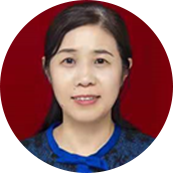
Zhiyong Feng
IEEE Fellow
Beijing University of Posts and Telecommunications
Bio: Zhiyong Feng received the B.S., M.S. and Ph.D. degrees from Beijing University of Posts and Telecommunications (BUPT), China. Now she is a professor at BUPT and the Director of Key Laboratory of Universal Wireless Communications, Ministry of Education, China. She received Outstanding Young Researcher Award from Natural Science Foundation of China (NSFC) in 2015, and she has been Millions of Talent Projects National candidates. Currently, she is serving as Associate Editors-in-Chief for China Communications, and a technological advisor for NGMN. She is a member of Expert Committee of China Intelligent Transportation Systems Association, chair of the Information and Communication Test Committee of the Chinese Institute of Communications. Her main research interests include wireless network architecture design and radio resource management in mobile networks, spectrum sensing and dynamic spectrum management in cognitive wireless networks, and integrated sensing and communications.
Speech Title: Integrated Sensing and Communication (ISAC) for the Intelligent Machine Network
Abstract: With the rapid development of telemedicine, high level autonomous driving, intelligent manufacturing, and etc., the research on intelligent machine-type communication (IMTC) is imminent. The traditional mobile network technology has been difficult to meet the requirements. To support this, the deep integration of sensing, communication and computing in future mobile communication networks should be studied. This speech will introduce the concept of Joint Communication and Sensing System for IMTC networks, and discuss key challenges and candidate technologies for future research.
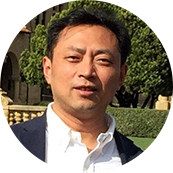
Bo Ai
IEEE Fellow, IET Fellow
Beijing Jiaotong University, China
Bio: Prof. Bo Ai (IEEE Fellow, IET Fellow) is the professor and doctoral supervisor of Beijing Jiaotong University. He is the Dean of School of Electronic and Information Engineering.
Prof. Bo Ai has published 6 Chinese academic books, 3 English books, over 180 IEEE journal articles. He has obtained 13 international paper awards include IEEE VTS Neil Shepherd Memorial Best Propagation Award and IEEE GLOBECOM 2018 Best Paper Award, 36 invention patents; 32 proposals adopted by the ITU, 3GPP, etc., and 9 provincial and ministerial-level science and technology awards. His research results has been involved in 6 national standards. He is mainly engaged in the research and application of the theory and core technology of broadband mobile communication and rail transit dedicated mobile communication systems (GSM-R, LTE-R, 5G-R, LTE-M).
Prof. Bo Ai is the Fellow of Chinese Institute of Electronics, Fellow of China Institute of Communications, Chair of IEEE BTS Xi'an Branch, Vice Chair of IEEE VTS Beijing Branch, IEEE VTS distinguished lecturer, am expert of the 5G Industry Expert Group of the China Mobile Group Technical Advisory Committee,and expert of the 6G Group in China.
Speech Title: Network-based Integrated Sensing and Communications
Abstract: With the advent of the era of 6G mobile communications, the integration of several core technologies such as sensing and communication has become inevitable. But network-based integration faces many challenges. What are technical challenges? This lecture will explore these open questions.
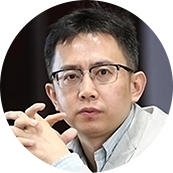
Lingyang Song
IEEE Fellow
Peking University, China
Bio: Lingyang Song received his PhD from the University of York, UK, in 2007, where he received the K. M. Stott Prize for excellent research. He worked as a research fellow at the University of Oslo, Norway until rejoining Philips Research UK in March 2008. In May 2009, he joined the School of Electronics Engineering and Computer Science, Peking University, and is now a Boya Distinguished Professor. He is the co-author of a number of best paper awards, including IEEE ComSoc Leonard G. Abraham Prize in 2016, IEEE ComSoc Heinrich Hertz Award in 2021, IEEE ComSoc Asia Pacific Outstanding Paper Award in 2021, IEEE ICC 2014, IEEE ICC 2015, IEEE Globecom 2014. He has served as a Distinguished Lecturer of IEEE Communications Society, an Area Editor of IEEE Transactions on Vehicular Technology, an Editor of IEEE Transactions on Communications. He is a Fellow of IEEE.
Speech Title: Reconfigurable Holographic Surfaces: A New Paradigm to Holographic Communications for 6G
Abstract: The future sixth generation wireless communications look forward to constructing a ubiquitous intelligent information network with high data rates. To fulfill such challenging visions, the reconfigurable holographic surface (RHS) is developed as a promising solution due to its capability of accurate multi-beam steering with low power consumption and hardware cost. Unlike the conventional phase-controlled antennas, RHS can control the radiation amplitude of the reference wave propagating on the metasurface by leveraging the holographic technique. Such amplitude-controlled holographic beamforming triggers new challenges since a new beamforming scheme needs to be developed to handle the complex-domain optimization problem subject to the unconventional real-domain amplitude constraints. Both analytical and simulation results verify the significant data rate improvement of the proposed scheme.